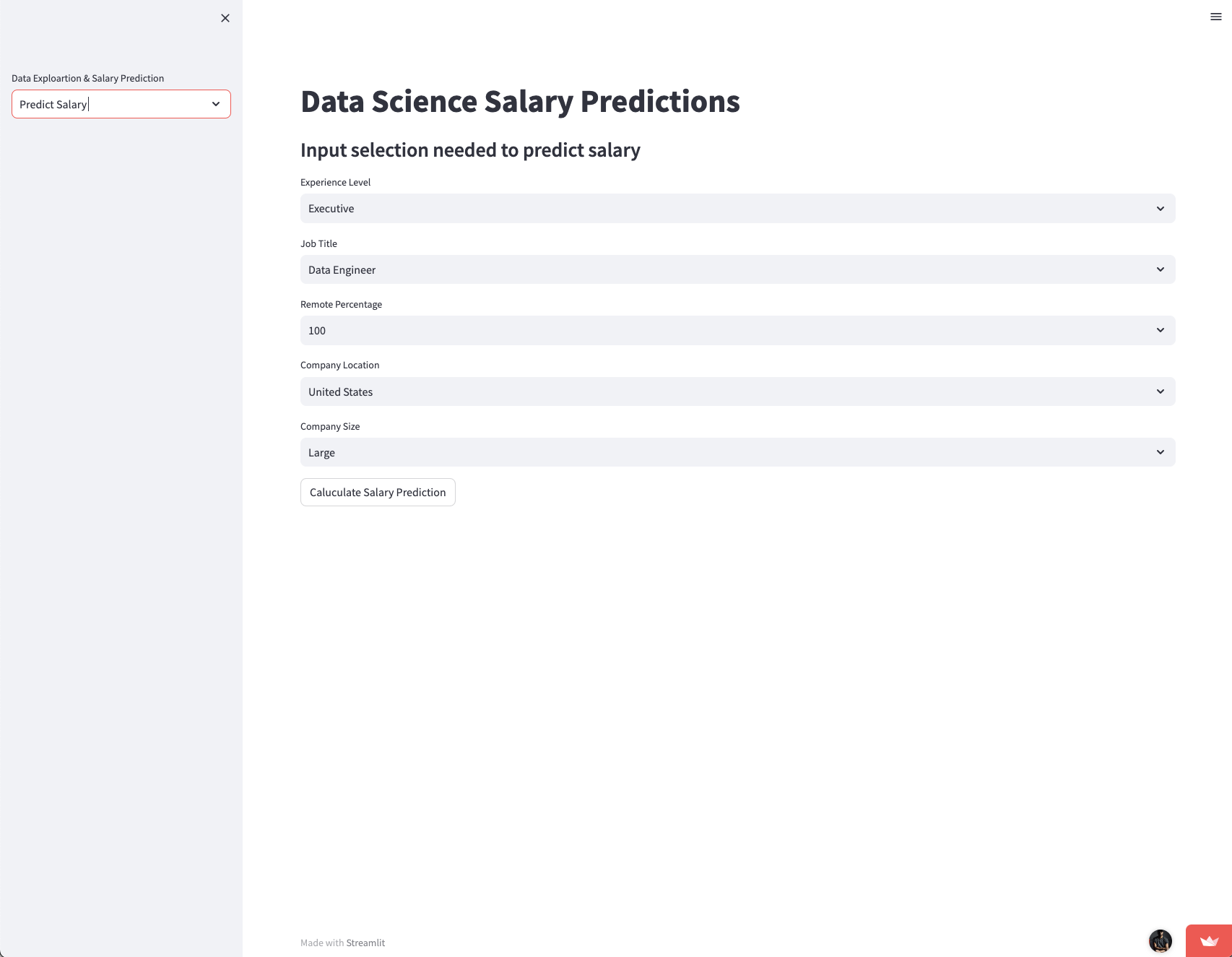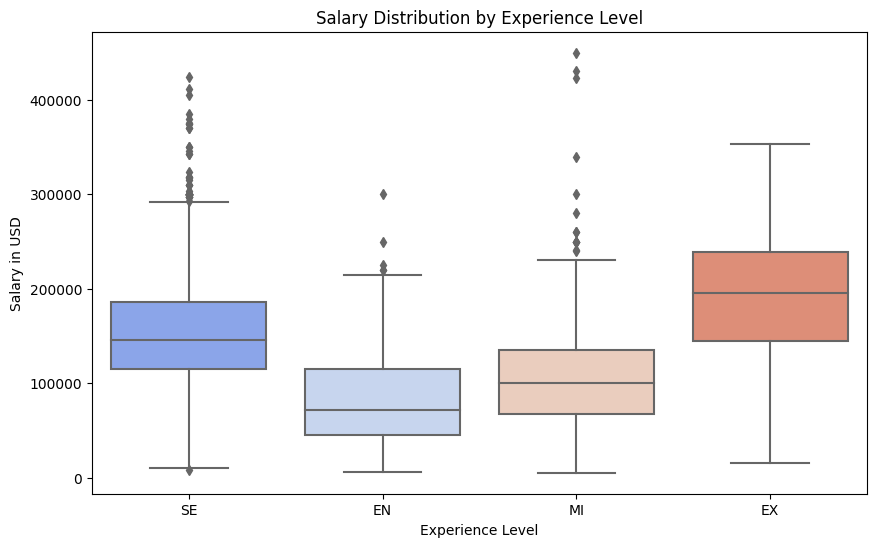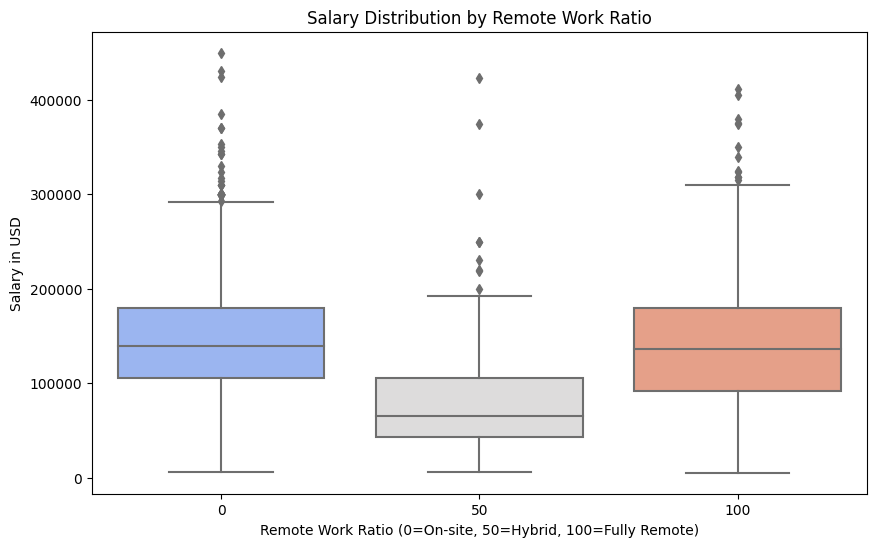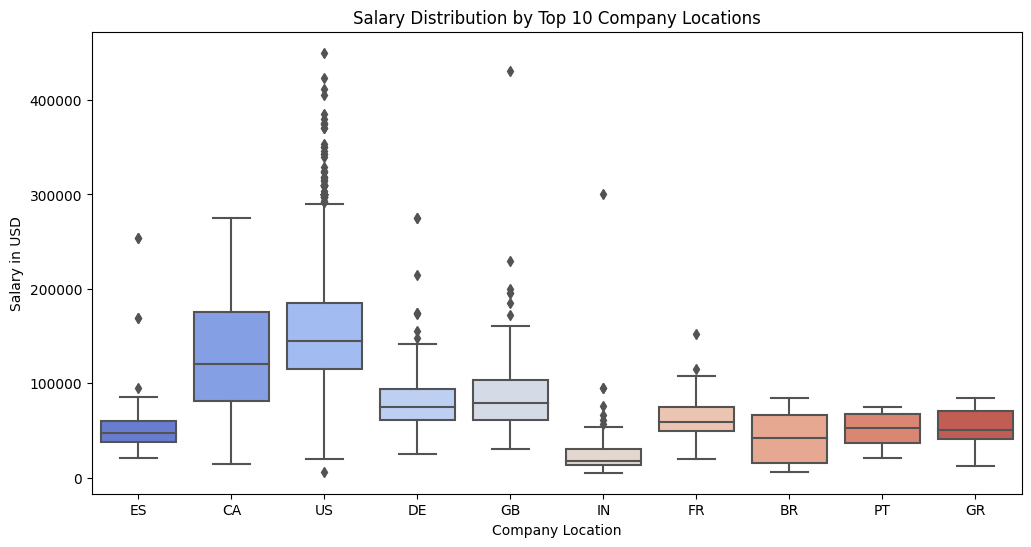Salary Prediction Analysis
OVERVIEW
This project analyzed salary patterns across the global data science industry using historical datasets. The goal was to understand how experience, company size, and work flexibility impact compensation, while also building predictive models to forecast salaries. The challenge: how do you translate raw data into insights that are both technically rigorous and strategically valuable?

ROLE
Shaping Insights through Data
I served as Data Scientist, leading the end-to-end workflow: data collection, cleaning, exploratory analysis, feature engineering, model development, and interpretation.
I combined technical execution with analytical storytelling, ensuring the results were not just accurate but also actionable for both technical and business stakeholders.
Key Dimensions
Data Engineering
Cleaned, normalized, and engineered features from raw salary datasets
Model Development
Built and validated predictive models using machine learning algorithms
Strategic Analysis
Translated technical findings into business recommendations and insights
KEY CHALLENGES
Navigating Data Complexity
Data Quality
Handling missing values, outliers, and noisy compensation data across different industries, regions, and reporting standards.
Complex Relationships
Accounting for multi-variable interactions between role, experience, geography, company size, and remote work arrangements.
Interpretability
Ensuring results could be understood and acted upon by non-technical stakeholders while maintaining statistical rigor.
DATA PREPARATION
From Raw Data to Reliable Inputs
Data Cleaning
Cleaned and normalized datasets for consistency, handling missing values and removing outliers that could skew model performance.
Feature Engineering
Engineered features to capture seniority levels, company size categories, and work flexibility metrics for better model interpretability.
Exploratory Analysis
Applied exploratory visualizations to uncover initial patterns and validate assumptions about salary distributions.
Tech Stack

MODELING
Turning Patterns into Predictions
I trained multiple models to predict salaries, including Random Forests and baseline regressions. Random Forest emerged as the top performer with exceptional accuracy across all metrics.
Accuracy
Overall prediction accuracy
Precision
Positive prediction accuracy
Recall
True positive detection rate
F1 Score
Harmonic mean of precision and recall
Random Forest Model
The Random Forest algorithm was selected for its ability to handle complex feature interactions while maintaining interpretability. The model was trained on engineered features including experience level, company size, job role, and remote work ratio.
Key Features
- • Experience level (Entry, Mid, Senior, Executive)
- • Company size (Small, Medium, Large)
- • Job role and specialization
- • Remote work ratio (0%, 50%, 100%)
Model Benefits
- • Handles non-linear relationships
- • Provides feature importance rankings
- • Robust to outliers and missing data
- • Interpretable decision paths
RESULTS
Data Insights Uncovered
Experience Progression
Clear salary progression from entry-level to executive positions, with substantial increases at senior and executive tiers.
Company Size Impact
Larger companies consistently offer higher median salaries across all experience levels and job roles.
Remote Work Parity
Fully remote roles showed compensation on par with, or even above, onsite jobs in many categories.
INSIGHTS
What the Data Reveals
Experience Level Impact
Career progression yields substantial salary increases, especially at the executive tier. The data shows clear compensation bands that align with industry expectations and provide a roadmap for career growth.
Company Size Correlation
Larger firms consistently set higher salary baselines across all roles, while smaller firms compete through specialized roles, equity packages, and growth opportunities.
Remote Work Trends
Remote jobs are not just competitive — they often surpass onsite pay, particularly for senior roles. This reflects the premium companies place on accessing global talent and the value of flexible work arrangements.
Key Finding
100% remote positions show 15-20% higher median salaries compared to onsite roles, indicating a market premium for distributed work capabilities.




BUSINESS RECOMMENDATIONS
Turning Analysis into Strategy
Competitive Benchmarking
Align pay structures with industry benchmarks to attract and retain top talent. Use data-driven salary bands to ensure competitive positioning.
Action: Implement quarterly salary reviews against market data
Workforce Planning
Build retention through compensation pathways tied to career growth. Create clear progression models based on experience and performance.
Action: Develop transparent career ladders with salary expectations
Global Positioning
Account for regional salary variations when expanding or hiring remotely. Leverage geographic arbitrage while maintaining competitive offers.
Action: Create location-adjusted compensation frameworks
Data-Driven Recruitment
Use predictive models to align offers with market reality and reduce turnover. Optimize hiring budgets based on role requirements and market conditions.
Action: Deploy salary prediction tools in recruitment workflows
Project Resources
DATA THAT INFORMS DECISIONS
From Numbers to Strategy
This project demonstrated how salary data can be more than a snapshot — it can guide workforce planning, market positioning, and individual career choices.
Technical Impact
- Model Performance:Achieved 92% accuracy with Random Forest, demonstrating robust predictive capabilities.
- Data Engineering:Successfully cleaned and engineered features from complex, multi-dimensional salary datasets.
- Interpretability:Translated complex model outputs into clear, actionable business insights.
Business Value
- Strategic Insights:Revealed key compensation drivers that inform both individual and organizational decisions.
- Market Intelligence:Provided data-driven benchmarks for competitive positioning and talent acquisition.
- Scalable Framework:Created reusable methodology for ongoing salary analysis and prediction.
By blending machine learning with data storytelling, the results moved beyond numbers into strategic insights that inform real-world decisions.